Martin Plajner
Monotonicity in practice of adaptive testing
Sep 15, 2020



Abstract:In our previous work we have shown how Bayesian networks can be used for adaptive testing of student skills. Later, we have taken the advantage of monotonicity restrictions in order to learn models fitting data better. This article provides a synergy between these two phases as it evaluates Bayesian network models used for computerized adaptive testing and learned with a recently proposed monotonicity gradient algorithm. This learning method is compared with another monotone method, the isotonic regression EM algorithm. The quality of methods is empirically evaluated on a large data set of the Czech National Mathematics Exam. Besides advantages of adaptive testing approach we observed also advantageous behavior of monotonic methods, especially for small learning data set sizes. Another novelty of this work is the use of the reliability interval of the score distribution, which is used to predict student's final score and grade. In the experiments we have clearly shown we can shorten the test while keeping its reliability. We have also shown that the monotonicity increases the prediction quality with limited training data sets. The monotone model learned by the gradient method has a lower question prediction quality than unrestricted models but it is better in the main target of this application, which is the student score prediction. It is an important observation that a mere optimization of the model likelihood or the prediction accuracy do not necessarily lead to a model that describes best the student.
Probabilistic Models for Computerized Adaptive Testing
Mar 26, 2017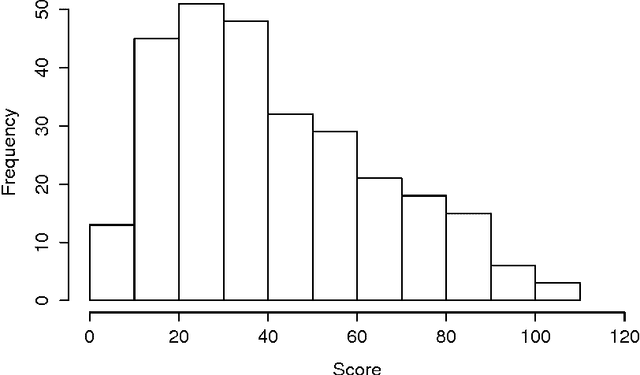



Abstract:In this paper we follow our previous research in the area of Computerized Adaptive Testing (CAT). We present three different methods for CAT. One of them, the item response theory, is a well established method, while the other two, Bayesian and neural networks, are new in the area of educational testing. In the first part of this paper, we present the concept of CAT and its advantages and disadvantages. We collected data from paper tests performed with grammar school students. We provide the summary of data used for our experiments in the second part. Next, we present three different model types for CAT. They are based on the item response theory, Bayesian networks, and neural networks. The general theory associated with each type is briefly explained and the utilization of these models for CAT is analyzed. Future research is outlined in the concluding part of the paper. It shows many interesting research paths that are important not only for CAT but also for other areas of artificial intelligence.
Probabilistic Models for Computerized Adaptive Testing: Experiments
Feb 01, 2016
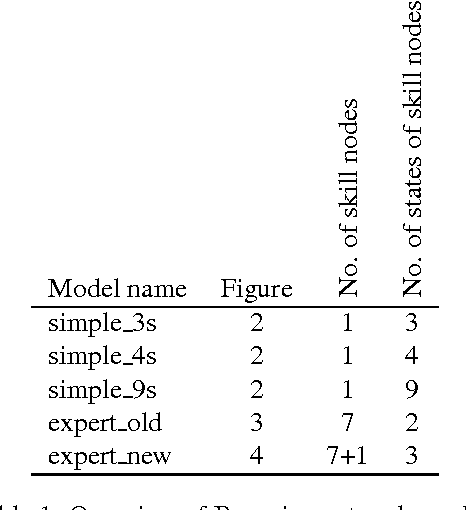
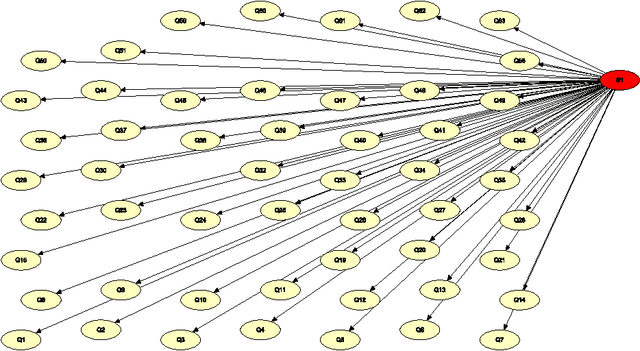

Abstract:This paper follows previous research we have already performed in the area of Bayesian networks models for CAT. We present models using Item Response Theory (IRT - standard CAT method), Bayesian networks, and neural networks. We conducted simulated CAT tests on empirical data. Results of these tests are presented for each model separately and compared.
Bayesian Network Models for Adaptive Testing
Nov 26, 2015
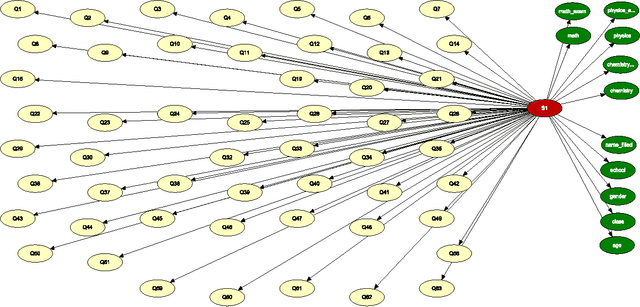

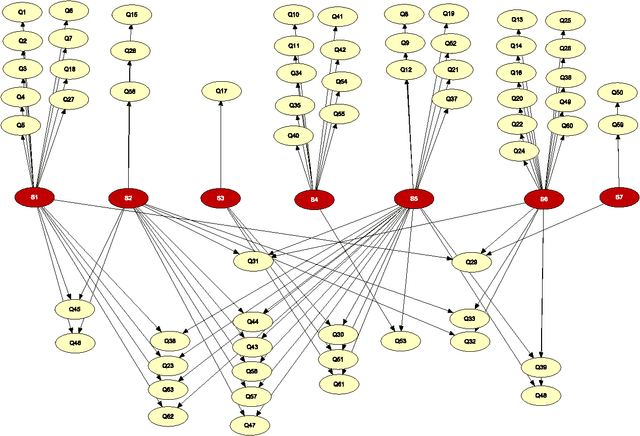
Abstract:Computerized adaptive testing (CAT) is an interesting and promising approach to testing human abilities. In our research we use Bayesian networks to create a model of tested humans. We collected data from paper tests performed with grammar school students. In this article we first provide the summary of data used for our experiments. We propose several different Bayesian networks, which we tested and compared by cross-validation. Interesting results were obtained and are discussed in the paper. The analysis has brought a clearer view on the model selection problem. Future research is outlined in the concluding part of the paper.
* 12th Annual Bayesian Modelling Applications Workshop, Amsterdam, Netherlands, (July 2015). 10 pages
 Add to Chrome
Add to Chrome Add to Firefox
Add to Firefox Add to Edge
Add to Edge